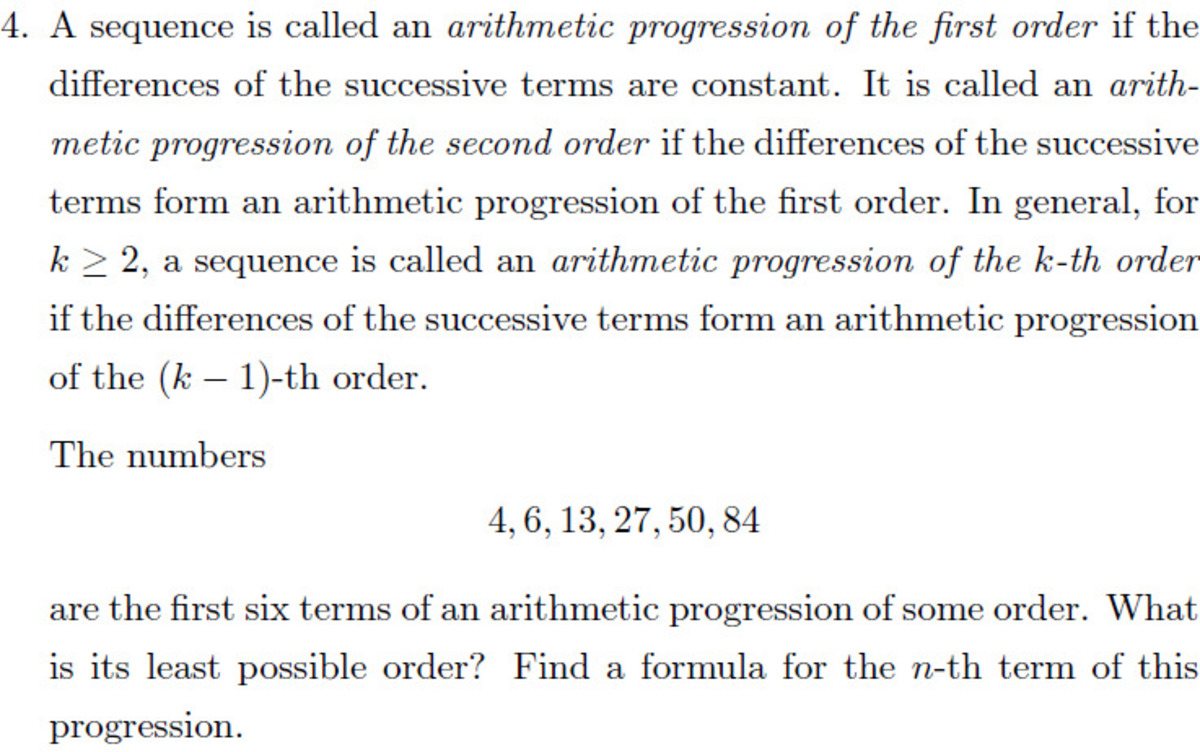Hello Solve this interesting problem

From today I will discuss one interesting math problem in this forum daily...keep in touch...try to solve them.
No vote yet
12 votes
Easy Math Editor
This discussion board is a place to discuss our Daily Challenges and the math and science related to those challenges. Explanations are more than just a solution — they should explain the steps and thinking strategies that you used to obtain the solution. Comments should further the discussion of math and science.
When posting on Brilliant:
*italics*or_italics_**bold**or__bold__paragraph 1
paragraph 2
[example link](https://brilliant.org)> This is a quote# I indented these lines # 4 spaces, and now they show # up as a code block. print "hello world"\(...\)or\[...\]to ensure proper formatting.2 \times 32^{34}a_{i-1}\frac{2}{3}\sqrt{2}\sum_{i=1}^3\sin \theta\boxed{123}Comments
Hi,
an=62n3+9n2+n+24 for n = 0,1,2 ...
Log in to reply
how did u get the answer?
yes you are right....according to my calculation....::::::another possible sequence can be identified as :: a_n = \frac {2n^{3}+3n^{2}-11n+30}{6}
Log in to reply
Yes, you are starting from n = 1. Thanks for the problem.
Log in to reply
i have a new one..........try this
Nice problem but at least one should provide us the proper step-wise solution or at least logic behind the answer. I hope, you'd! Regards
Log in to reply
See, if you calculate the difference between the numbers(6 as displayed) it comes to :2,7,14,23,34. Since we cannot see any meaning in the above derived sequence we find the difference between the successive numbers of the same which comes to: 5,7,9,11 Again it is not of much meaning so find the differences between successive numbers in 5,7,9,11 which tantamounts to: 2,2,2,. Hence we can conclude that the above sequence in the question is an equation of degree 3. So we can now write in the form: f(n)=an3+bn2+cn+d To find a,b,c,d just substitute for n=1,2,,3,4,5,6... Now u will know what to do?
Log in to reply
you did the job rightly...... thanks for describing for him....
here see Muhammad, i am not as expert in math as calvin,the problem master, is ....so when i come across some math problem that can make oneself think in a new process or supplies an additional data, i want to post them to spread among my net-friends ....so i could not meet your expectation to provide "proper step-wise solution" and i think you ,as being in university, could atleast get at the heart of the logic under this problem......enjoy the problems posted by me daily....thanking you...
g
czfh
vbhj
kh,l
bj,bn
its 4th order,still working on the formula
Log in to reply
still working....!!??!!??....:)
Log in to reply
Lagrange Interpolation gives the lowest order polynomial that describes a group of points.
I'm not so good at progressions.
Log in to reply
o.k. you are not jack of all trades..i.e. master of any special branch surely...have a try for it
actually it is 3rd order...very few of you showed interest in the problem.... better try tomorrow's problem....and find nth order....
the nth term is perhaps t=(2n^3+3n^2-11n+30)/6
it's a series where the 3rd differnce series is ap of c.d 4 so the formula for the n'th term is definitely {2n^3+3n^2-11n+30}/6
this is 3rd order and formula is (2n^3+3n^2-11n+30)/6
3rd order